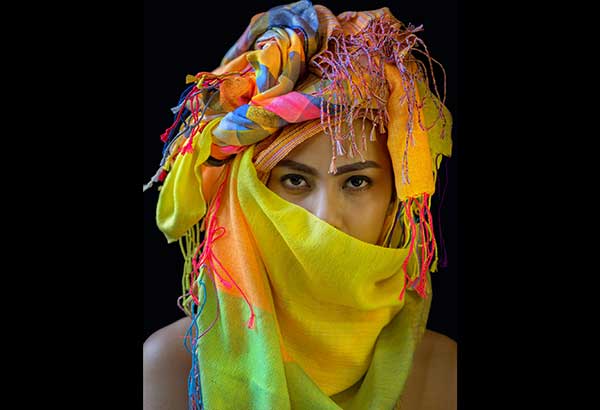Weaving the heirlooms of the future

The vibrant colors of Balay ni Atong’s inabel scarf gives the traditional textile a contemporary feel
MANILA, Philippines - ASEAN Master Craftsman Al Valenciano of Balay ni Atong remembers abel all over his house when he was young. The textile was used for mundane everyday items such as napkins and tablecloths; it comforted and warmed as a favorite blanket; it was elevated to an heirloom and given as wedding presents. “Even in death, they blanketed our dearly departed in immaculate white,” Valenciano writes in the book Inabel: Philippine Textiles from the Ilocos Region.
The history of the iconic fabric dates back even further than the young Valenciano’s dining table. During the Spanish colonization, there was a great demand for the textile which was sturdy enough to be used as ships’ sails.
The textiles were valued so much that they could be bartered for gold and minerals. As heirlooms, they signified wealth and prestige.
Everyone in the community was involved in the process, from growing and harvesting the cotton, sourcing the dyes, ginning and spinning the threads, and weaving the actual fabric.
Through the years, however, appreciation for the traditional weaving diminished. People were so used to having it that they did not consider it special, Valenciano recalls. With demand dwindling, the quality of the weave started to deteriorate as well, with fewer and fewer youth wanting to take up weaving. The tradition even completely died out in some places, Valenciano says.
Then an accountant, Valenciano found himself in Mindanao, where he was fascinated by the elaborate textiles he saw there. Eventually, he realized that they had their own weaving in his hometown – his childhood abel. Thus began the journey that would end in Balay ni Atong.
Valenciano became an avid collector of textiles – the abel of the north and the inabel, specific to the Ilocos provinces.
“I realized that I was not only collecting textiles, I was also documenting the stories of actual lives, with their joys and heartaches,” Valenciano writes. “Frequent travels from my home in La Union to Laoag allowed me to make side-trips to more weaving communities around Ilocos.”
From Vigan to Santiago, Abra to Bangar and Bacnotan, Valenciano’s travels became the thread that brought together the weaving traditions of each community.
“Each weaving community had its own unique weaves. I discovered that certain traditions that had already disappeared in one community were still alive in another.
In every community, we sought to recreate each and every pattern and method to ensure that all our weaving traditions stayed alive,” he writes.
Valenciano calls himself an “accidental abel trader” when he started selling to friends in 2008. The demand was positive and Valenciano saw a resurgence in the weaving communities that he worked with.
Under the label Balay ni Atong, Valenciano has brought the traditional weaving to an international market.
While adhering to authentic traditional methods, Balay ni Atong has innovated on traditional designs and colors to appeal to a whole new generation of consumers.
For example, Valenciano plays with the scale of the traditional kusikus (whirlpool) pattern or even isolates elements of the pattern to create a new, modern look.
The product of the fusion of tradition craft and modern aesthetic is contemporary Ilocano handwoven textiles with rich coloring and bold designs.
With their innovations, Balay ni Atong is continuing an important part of a long cultural heritage of the Ilocos region.
Valenciano also established a Study Center for Traditional Handwoven Textiles of the Northern Philippines. The center aims to achieve sustainability for both scholars and weavers. It strives to re-introduce the inabel “not as an ordinary textile, but as artworks produced by artisans.”
The latest Balay ni Atong collection will be featured in the ArteFino artisan fair on Aug. 25 to 27. “I am looking forward to presenting the new collection that I am doing with Len Cabili (of Filip+Ina) and Natalya Lagdameo,” says Valenciano.
Valenciano describes weaving the inabel as “recreating the past… producing future heirlooms.”
Indeed, Balay ni Atong’s contemporary take on the traditional textile weaves together a rich cultural heritage with the threads of the present – all for a sustainable future for the abel.
- Latest
- Trending


















